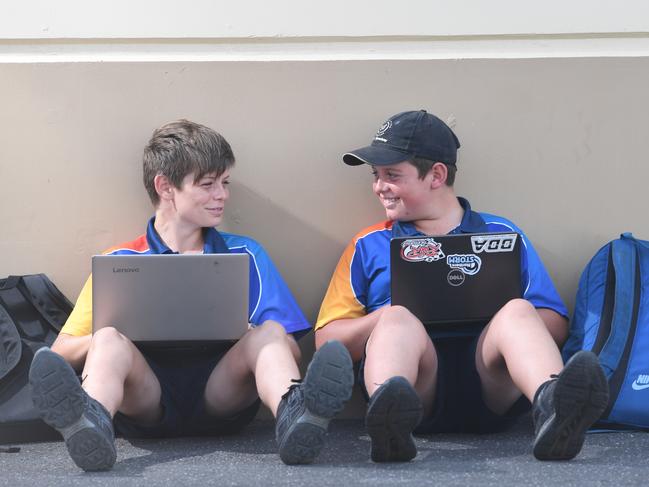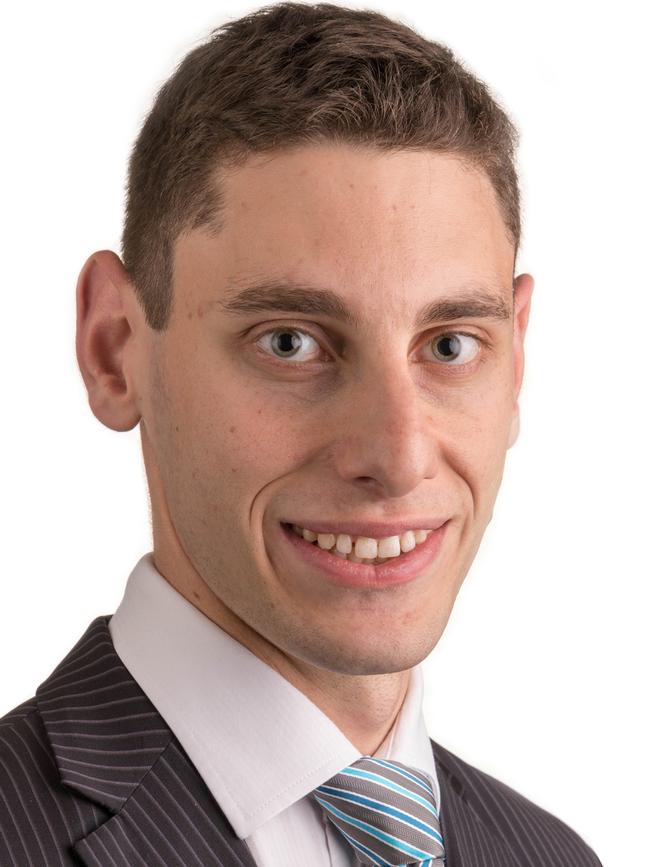‘Instructional leaders’ credited with improving NAPLAN results
They are the secret weapons being used by schools to improve their NAPLAN results. But you won’t find them in front of a whiteboard or behind a desk. SEARCH YOUR SCHOOL’S RANKING

Their role in the classroom is to monitor teacher performance, analyse assessment results and zero in on students at risk of falling through the cracks.
Rolled out in some primary schools, “instructional leaders” are also credited with helping most of the state’s most-disadvantaged primary schools in NSW improve their NAPLAN scores by up to 23 per cent, an analysis of five years of data has shown.
Regional public high schools have also improved dramatically, with Ballina Coast High School in the state’s north, and Coonamble High School and Boorowa Central School all improving their NAPLAN scores by 10 per cent over the past five years.
NAPLAN tests assess a student’s basic skills compared to the Programme for International Assessment results released this week which examine the higher order thinking skills of the nation’s 15-year-olds.

NSW Primary Principals’ Association president Phil Seymour said instructional leaders had been transformational for schools who received one.
“That is the biggest thing that we’ve done,” Mr Seymour told The Daily Telegraph.
“They meet with teachers, they plan with teachers and they were a fantastic resource for schools.”
Education Minister Sarah Mitchell said the instructional leader roles were giving teachers constant professional development.
“It is so important that we ensure teachers can access continued professional development, because of the positive impact it has on the quality of education,” Ms Mitchell said.
“We have continued to develop the instructional leadership program that builds the skill, capacity and knowledge of staff and the community,” she said.
Secondary Principal Council president Craig Petersen called for instructional leaders to be rolled out in all secondary schools.
“For Central Schools (like) Boorowa Central School and Yeoval Central School, the secondary teachers get the benefit of working with those instructional leaders, and there is also the benefit of a flow through of curriculum.”
Revealed: The most improved schools in Inner City Sydney
Most improved schools in Northern Sydney
Western Sydney’s most improved schools
NAPLAN: Coast’s most improved schools
The Illawarra’s top performing schools revealed
Canberra’s biggest NAPLAN our biggest improvers
South west Sydney’s biggest improvers
The Illawarra’s top performing schools revealed
Which Hunter schools have improved NAPLAN results?
“From a Secondary Principals Council perspective, we would actually like to see those types of positions not just something the principals buys out of their funding, but we would like to see it embedded in the staffing entitlement so every school gets the benefit.”
Ballina Coast parent Mark Stanger said the school’s buildings were all new and there was an emphasis on sport for his son Reece in Year 7 and Daykin in Year 8.
“Every day they’re playing sport, so they’re out, they’re active and it is the old cliche, healthy body, healthy mind,” he said.

“It is a very open plan school, sort of like university where there are lot glass walls between rooms. They are given a bit more freedom, they can have a stand up desk if they wanted.”
Walla Walla Public School in the state’s south west was the most improved primary school, improving Year 5 NAPLAN results by 23 per cent over the last five years.
The school has just 44 students, 28 per cent of whom come from homes in the lowest income quarter.
Carrington Public School in Newcastle where one third of its students come from the lowest income quartile have improved their scores by a massive 21 per cent.
In Sydney Glebe Public School, where one fifth students come from families in the bottom income quartile, have 18 per cent better test results than five years ago.

The school’s relief principal Bryce Walker said the school’s instructional leader was vital to the improvement in their results, zeroing in on areas to focus on.
“One of the areas we looked at was grammar and punctuation with a focus on our Aboriginal students.”
“It was run across the whole school for all students, but something we were really proud of was the data for Aboriginal students which showed an increase of 65 per cent in that area.”
“NAPLAN gave us a big picture of everything, and then we honed down into our internal data so we could say, ‘in this particular year groups, these students are having trouble with this’.”
Instructional leaders have been rolled out in needy NSW Public Schools with the special task of giving staff effective literacy and numeracy teaching practices,
They also comb through datasets to give schools a picture of what they are not doing well, research techniques they could use to do better and zero in on students who are at risk of falling through the cracks.


It is all ultimately with the goal of shifting performance across literacy and numeracy in external and internal school assessment.
To prevent from students graduating from primary school without being able to read or write, instructional leaders triage students and target them with interventions to get them back on track.
Instructional leader at Glebe Public School Jessamy Rush said it was about looking at the specific needs of a student and seeing what resources they can draw on to support that child.
“It may be the opportunity to be in a smaller group that is targeted towards literacy or numeracy to work on some of those skills,” she said.
She also goes into other classes to see how staff are teaching.
“We have an observational cycle so the teachers can be observed, we can give them feedback on areas that they want to work, but then they can also go into other classes and observe other classes.


Department of Education Deputy Secretary Murat Dizdar said instructional leaders were now in 500 primary schools and they are experts in high expectations, strong classroom management, effective reading and numeracy pedagogy as well as using data.
“These people are off class, working shoulder to shoulder with teachers and meeting teachers where they are at and growing their mastery and capacity to lift student performance in the classroom,” Mr Dizdar said.
But he said secondary schools were now hiring primary school teachers because they were experts in classroom management and effective teachers.
“We are seeing over the last few years secondary school buying instructional leaders with their own resources and they are targeting people with a primary background,” he said.
“These people don’t go in as the content experts … but they are classroom experts.”
Centre for independent Studies Education Researcher Blaise Joseph said the Education Department should copy what successful schools were doing across to other schools.
“We don’t need to reinvent the wheel in education: many schools are already doing a great job, we just need to make their success more common,” he said.
